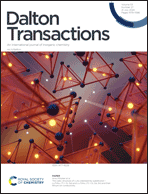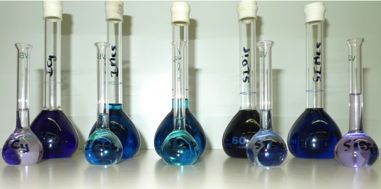"Homoleptic Ruthenium(II) Complexes Bearing Imidazol(in)ium-2-dithiocarboxylate Ligands: Synthesis, Characterization, and Redox Properties"
Valdemiro P. Carvalho Jr, Guillermo Zaragoza, and Lionel Delaude
 |
source: Dalton Transactions
year: 2024
volume: 53
first page: 11436
last page: 11444
doi: 10.1039/d4dt01503g
|

Abstract: Five cationic ruthenium(II) chelates with the generic formula [Ru(S2C·NHC)3](PF6)2 were readily obtained upon cleavage of the [RuCl2(p-cymene)]2 dimer with representative imidazol(in)ium-2-dithiocarboxylate zwitterions (NHC·CS2) in the presence of KPF6. The homoleptic complexes were fully characterized by various analytical techniques and the molecular structure of one of them was determined by single-crystal X-ray diffraction analysis. As expected, it featured an octahedral RuS6 core surrounded by three imidazol(in)ium rings and their nitrogen substituents. The robustness of the Ru-S bonds combined with the chelate effect of the κ2-S,S'-dithiocarboxylate units and the steric protection imparted by bulky 1,3-diarylimidazol(in)ium groups most likely accounted for the outstanding stability of these species in solution. Cyclic voltammetry showed that the five homoleptic complexes featured characteristic waves for a monoelectronic redox process corresponding to the Ru(III)/Ru(II) couple with E1/2 values ranging between 0.97 and 1.27 V vs. Ag/AgCl. This half-wave potential was clearly dependent on the nature of their ancillary ligands as the evolution of the Ep,ox values roughly paralleled the basicity sequence of the NHCs used to prepare them, in line with the trends observed when monitoring the chemical shifts of the CS2- unit on 13C NMR spectroscopy and the CS2- asymmetric stretching vibration wavenumbers on IR spectroscopy.
[Full Text] [<< Previous Article] [Back to the List of Publications] [Next Article >>] l.delaude@ulg.ac.be